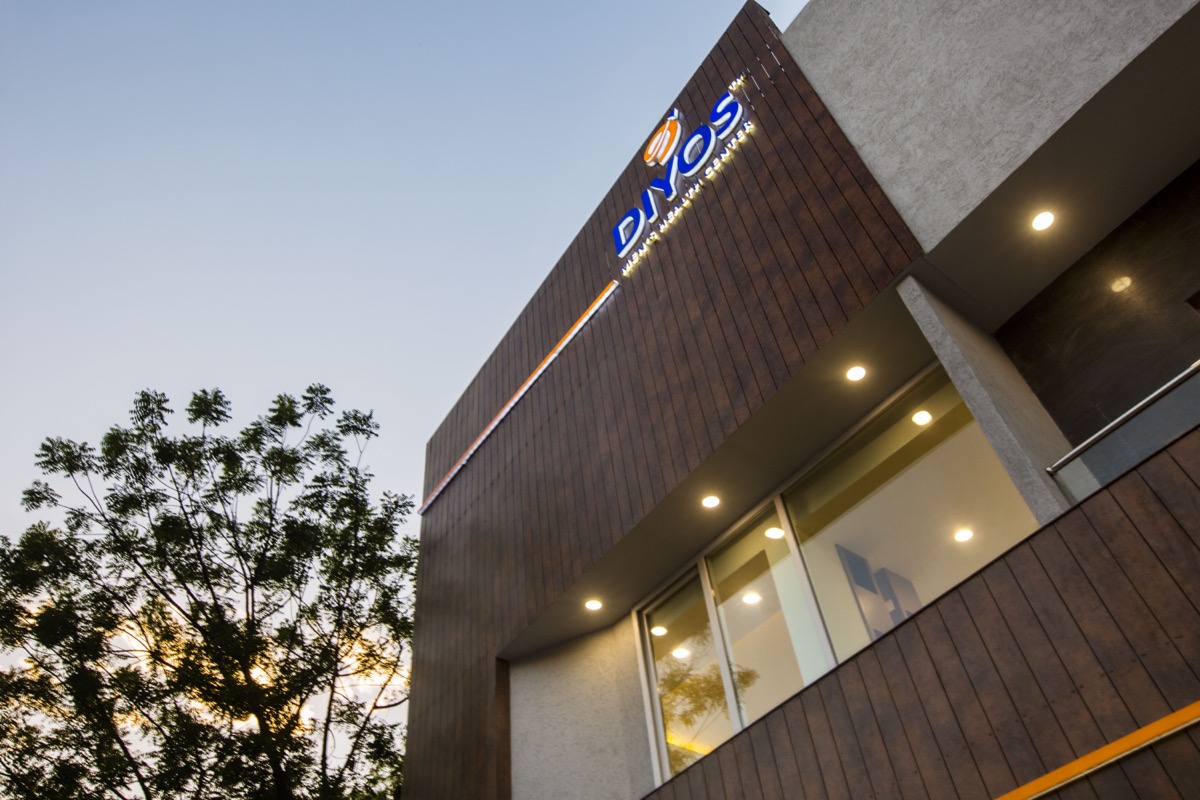 Architect’ Firm: Creative Designer Architects [CDA]
Architect’ Firm: Creative Designer Architects [CDA]
Completion Year: 2017
Gross Built Area: 12,500 Sq. Ft.
Project location: Safdarjung Enclave, New Delhi
Photo credits: Suryan // dang
Lead Architects: Ravideep Singh, Maninder Kaur, Mohanbir Singh
Project Team: Ravideep Singh, Maninder Kaur, Sanju Nim, Gaurav Khanna
Text credit: Ravideep Singh
Client: Diyos Men’s Health Center Pvt Ltd. [Dr. Vineet Malhotra]
Once a derelict residential dwelling in the chic suburbs of South Delhi, This structure was conceived to be the most fitting by the architects for a one-of-a kind men fertility chain which was looking to make its debut with a flagship clinic. The building had clocked over 40 years, nearly touching the red mark of its life time, theoretically. The physical condition however, was evaluated and found to be apt for a quick turnaround. The translation of its planning from a residential dwelling to that of a clinic foresaw major structural challenges due to the walls being load bearing and absence of any RCC member in the structure. This was augmented by strengthening and retrofitting with structural steel, injection grouting etc. at multiple locations where existing walls were being knocked off and new ones were made, thus adding another 2-3 decades to the life of the building.

The clinic is conceived to be a harbinger of hope, optimism and joy for the visitors as well as a harmonious street furniture for the onlooker. Conceptually, the existing residential exterior is transmuted into a more simpler, sharper and a streamlined form. Its genesis draws inspiration from the conventional masculine characteristic which is more towards being rough and edgy. The exterior palette creates a harmony through play of mild grey dominated by orange-brown which is warm and robust. The edgy yet understated exterior attempts to break away from the monotony of the surrounding neighborhood.
The patient day care functions such as OPD’s, waiting areas and pharmacy is planned on the ground floor through the main entrance. The semen collection zone draws an isolated entry from the rear, keeping the anonymity donors would prefer. The first floor houses the meeting room and doctor’s lounge in the front segregated from the patient rooms along with the clinical support utilities in the rear. The top most floor is entirely clinical housing the highly sterile OT department in the front and pre-post beds etc in the rear.
The exterior modulation is also a rationale of the functions inside. Since the building is oriented facing SW, the OT’s have been designed in the front so that they can be screened completely, Significantly minimizing the heat gain from S and W. The first floor houses the meeting room and the doctor’s lounge towards the front, which have been slightly pushed inside creating a recess in the facade limiting direct southern sun and make the interior more habitable.
The warm and inviting interior is an apparent extension of the exterior conception. In order to make the clinic more welcoming and patient friendly, a small atrium with a sky-light has been carved out near the entrance lobby to exemplify the amount of daylight penetrating the interior. The smooth flowing lines, coherent both in the flooring and ceiling, complimented by a signature seating completes the reception composition well. The closely knit wooden battens in the ceiling and the back-drop and the confined color palette in beige’s and brown’s breathes warmth and care.
Drawings:






















